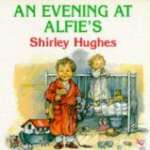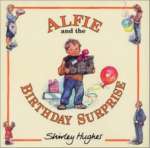
Growing up with his grandmother in a small Guatemalan town, seven-year-old Juan discovers the value of hard work, the joy of learning, and the location of the most beautiful place in the world.
Catalog sorted by age group

Growing up with his grandmother in a small Guatemalan town, seven-year-old Juan discovers the value of hard work, the joy of learning, and the location of the most beautiful place in the world.

With reverence, splendid majesty, and grace, award-winning artist Demi celebrates the life of Jesus and creates a book to be treasured for all time.

Mum and Dad have gone out for the night, leaving Maureen McNally to look after Alfie and Annie Rose. When disaster strikes and a water pipe starts leaking, Alfie helps Maureen halt the flood and also helps Annie Rose with some waterwork problems of her own.

Describes the life of the English girl whose discovery of an Ichthyosaurus fossil led to a lasting interest in other prehistoric animals.

Three very busy families engage in such activities as school, soccer, piano playing, and cooking.

As Little Clara grows up, she longs to see what lies beyond the lake on which she lives, so Clara leaves her familiar world for more distant places in search of something that will make her spirit dance.

A dog thinks he wants to leave the farm for the big city, but he finds out happiness is right next door.

Harry enjoys visiting his grandfather’s farm and seeing the homes of all the animals, but in the end he is happy to return to his own home in the city where he lives with his mom. By the creators of The Big Book of Families.

The death of Bob’s cat prompts his friends and family to give him a surprise birthday party and a very special present.